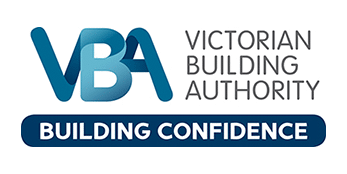When planning new windows for your home, one key consideration often rises to the top: ventilation. Fresh air flow is essential for comfort, air quality, and energy efficiency — especially in Melbourne’s ever-changing weather. Two common window types that homeowners weigh up are fixed windows and awning windows. But which one truly performs better when it comes to ventilation?
Spoiler alert: only one of them actually opens. But there’s more to it than that.
We’ll break down the key differences between fixed and awning windows, focusing on their ventilation capabilities — plus how the team at Facelift for Homes, with over 50 years of experience serving Melbourne and the Mornington Peninsula, can help you choose the right fit for your home.
What Are Fixed Windows?
Fixed windows, as the name suggests, are stationary. They don’t open or move. They’re designed to let in natural light and offer unobstructed views — but not airflow.
Quick facts:
-
Do not open or close
-
Provide excellent insulation
-
Ideal for framing views or as design features
-
Often paired with operable windows like awnings or casements
At Facelift for Homes, we often install fixed windows alongside operable ones to create a stylish, light-filled space that still breathes. They’re great when ventilation isn’t a top priority, but design impact is.
What Are Awning Windows?
Awning windows are hinged at the top and open outward from the bottom, creating a small canopy-like opening. This design lets in air while offering some protection from the elements — handy during those rainy Melbourne days.
Quick facts:
-
Open outward from the bottom
-
Operated with a winder or crank
-
Can remain open during light rain
-
Excellent for airflow and privacy
Facelift for Homes specialises in custom-made awning windows, installed by qualified professionals to ensure smooth operation, strong seals, and years of reliable performance. As Melbourne-registered builders, we understand the importance of correct placement and compliant installation.
Which Is Better for Ventilation?
Let’s get straight to the point.
Fixed windows don’t open — so they don’t offer any ventilation at all.
Awning windows, on the other hand, are designed to promote airflow. Their unique top-hinged design allows for continuous air circulation, even during light rain or windy days.
Winner: Awning windows, hands down.
Whether you live near the salty sea breezes of Mount Eliza or in the humid hills of Ferntree Gully, Facelift for Homes helps you plan your window layout to maximise cross-ventilation and natural cooling. Our team knows the local weather patterns — and we’ll tailor a solution that works with them.
Can Fixed Windows Still Support Ventilation?
Indirectly — yes.
While fixed windows don’t allow air in, they often pair with operable windows like awnings to create beautiful architectural effects that still let your home breathe.
For example:
-
Install fixed windows up high for light and awnings below for airflow.
-
Combine fixed and awning panels in a feature window for the front of your home.
Facelift for Homes frequently designs hybrid window combinations tailored to your space and lifestyle. You’ll get all the natural light and visual appeal without sacrificing ventilation.
Why Good Ventilation Matters in Melbourne Homes
Many homes in Melbourne — especially older ones — suffer from condensation, mould, and stale air, particularly in bathrooms, laundries, and second-storey bedrooms. This is made worse by winter heating, summer humidity, and compact layouts.
Strategically placed awning windows help:
-
Reduce moisture buildup
-
Improve air quality in closed-up rooms
-
Lower reliance on heating/cooling systems
Our team has installed thousands of awning windows across Melbourne and the Mornington Peninsula in both new builds and renovations — giving homes the ability to breathe naturally.
Energy Efficiency
Fixed windows offer excellent thermal insulation since they’re sealed shut. They’re often double glazed and low-maintenance — perfect for keeping energy bills down.
Awning windows also perform well when closed, with strong sealing and the option for double glazing. When open, they let you control airflow, helping cool your home naturally in summer.
Best of both worlds? Pair fixed and awning windows strategically.
We’ll help you plan your window placement to improve natural airflow, reduce reliance on air con, and maintain a comfortable indoor climate all year round.
Where Should You Use Each?
Use Fixed Windows When:
-
You want to frame a view or architectural element
-
Ventilation isn’t required
-
Security or insulation is a top concern
-
You’re pairing with operable windows nearby
Use Awning Windows When:
-
You need year-round ventilation
-
There’s frequent rain or wind
-
Privacy and airflow are both important
-
You’re placing windows high on walls
Whether you’re refreshing a single room or rethinking your entire home, Facelift for Homes will help you choose the right window types and placements for each space.
Final Verdict: Go for Function First
If ventilation is your top priority, awning windows are the clear choice. They’re practical, weather-resistant, and stylish — making them a favourite for Melbourne homes.
That said, fixed windows still play a crucial role in smart window design. Use them to create visual balance, enhance lighting, and improve insulation.
At Facelift for Homes, we bring over 50 years of hands-on experience, all backed by our 15-year product warranty and 5-star customer reviews. We don’t just offer windows — we deliver practical advice, clean installations, and long-term peace of mind.
👉 Contact us today on 1300 732 523 to chat with a real local expert, or check out our range of awning windows to get inspired.











